John came to our clinic after having been diagnosed with hip osteoarthritis a year previously. He had been taking ibuprofen to manage his pain and discomfort, and while the ibuprofen was helping alleviate his hip pain on “bad” days, he progressively developed severe low back pain. Were his hip and low back pains related?
Hip and low back pain 101
More often than not, pain located in the front of a hip indicates osteoarthritis and femoral acetabular impingement (FAI). Often this is combined with a labral tear, bursitis, and muscular tendinopathy.
When pain is located lateral to the hip, or pain in or just above the buttock, with or without radiation to the knee or lower leg, this is usually indicative of a lumbar spine dysfunction.
The hip utilizes a number of different muscles to function. The iliopsoas muscle group performs actions for both the hip and the lumbar spine. Its main function is to flex and externally rotate the hip. Additionally these muscles assist the spine in maintaining an upright position while being seated and stabilize the hip and low back during such movements as running and walking. These muscles attach to the lumbar spine, the pelvis and the femur.
The gluteus maximus is the largest of the gluteus muscles. Its main function is to extend the hip, internally and externally rotate the hip. It is the main opposer, or antagonist, of the iliopsoas muscle.
In an individual like John, suffering from hip osteoarthritis (HOA), there is considerable weakness in the iliopsoas muscle as well as the gluteus maximus muscles.1, 2 If left unaddressed, these muscles become weakened, which can cause an increased curve to the lumbar spine called a hyperlordosis, resulting in an abnormal tilt of the pelvis (Fig 1). Recruitment of secondary hip flexors such as the hip adductors and the hamstring begin to take up the work of hip flexion that the psoas muscle is primarily responsible for.

In a 2018 study, researchers evaluated the movement of both the thoracic and lumbar spines in individuals with one osteoarthritic hip.3 Compared to individuals without any hip osteoarthritis, their results illustrated that walking required increased movements of flexion and extension in the thoracic and lumbar spine in an osteoarthritic hip. This increase in spinal movement placed greater pressure on the contact joints of the vertebrae, called facet joints, along with greater pressure on the foramina, or the bony openings in the vertebrae where nerves exit from the spinal canal. Clinically, these pressured areas are the of cause lumbar pain and radiation of pain, respectively.
There has been some controversy in the scientific literature as to which comes first; the osteoarthritic hip causing muscle weakness, or whether muscle weakness is responsible for the development of the osteoarthritic hip. Regardless, the changes in the musculature and structure of both the hip and lumbar spine must be taken into account when we consider appropriate treatment.
Treatment for hip and low back pain
Ultimately we treated both John’s hip and his low back. After performing a full physical examination to assess for neurological and muscular deficits in the lower extremities and lumbar spine, we used ultrasound imaging to evaluate for structural and soft tissue changes. We also ordered additional imaging to confirm our physical findings and evaluation. Due to his moderate hip osteoarthritis and facet arthropathy, we chose adipose derived mesenchymal stem cells. This solution uses your body’s cells and growth factors to reduce inflammation and aid in the healing process. We delivered this treatment using ultrasound guidance to ensure the accurate placement of the solution. In order to retrain John’s body to use the proper muscles to perform his daily activities, we also engaged him in a physical therapy regimen.
Outcome
Six weeks after the procedure, John experienced a progressive reduction in his lower back pain. Several weeks later, John started to have pain alleviation in his osteoarthritic hip. On average, most people begin to have pain reduction three months following their procedures. Now, eight months after his procedure, John has experienced significant pain reduction in both his hip and low back, an improved gait and greater mobility. Through incremental muscle strength testing throughout John’s care, his physical therapist reports improved strength in his gluteus maximus, iliopsoas abdominal and lumbar paraspinal muscles. John has a goal to do a 6-mile hike in New Mexico that includes elevation gain in October. This is a goal that I know he can achieve.
Dr. Stacey Guggino, ND, LAc, graduated from the National College of Natural Medicine in Portland, Oregon with a Doctorate in Naturopathy and a Master’s degree in Oriental Medicine. For the past 12 years, she has specialized in treating pain and sports injuries with acupuncture and prolotherapy. Dr. Guggino has also studied and practiced aesthetic medicine for 11 years.
- Lee B, Lee SE, Kim YH, Park JH, Lee KH, Kang E, Kim S, Lee N, Oh D. Severe Atrophy of the Ipsilateral Psoas Muscle Associated with Hip Osteoarthritis and Spinal Stenosis—A Case Report. Medicina. 2021; 57(1):73. https://doi.org/10.3390/medicina57010073
- Buckthorpe M, Stride M, Villa FD. ASSESSING AND TREATING GLUTEUS MAXIMUS WEAKNESS – A CLINICAL COMMENTARY. Int J Sports Phys Ther. 2019;14(4):655-669
- Lifshitz L, Bar Sela S, Gal N, Martin R, Fleitman Klar M. Iliopsoas the Hidden Muscle: Anatomy, Diagnosis, and Treatment. Curr Sports Med Rep. 2020;19(6):235-243. doi:10.1249/JSR.0000000000000723
Photo by Age Cymru on Unsplash



